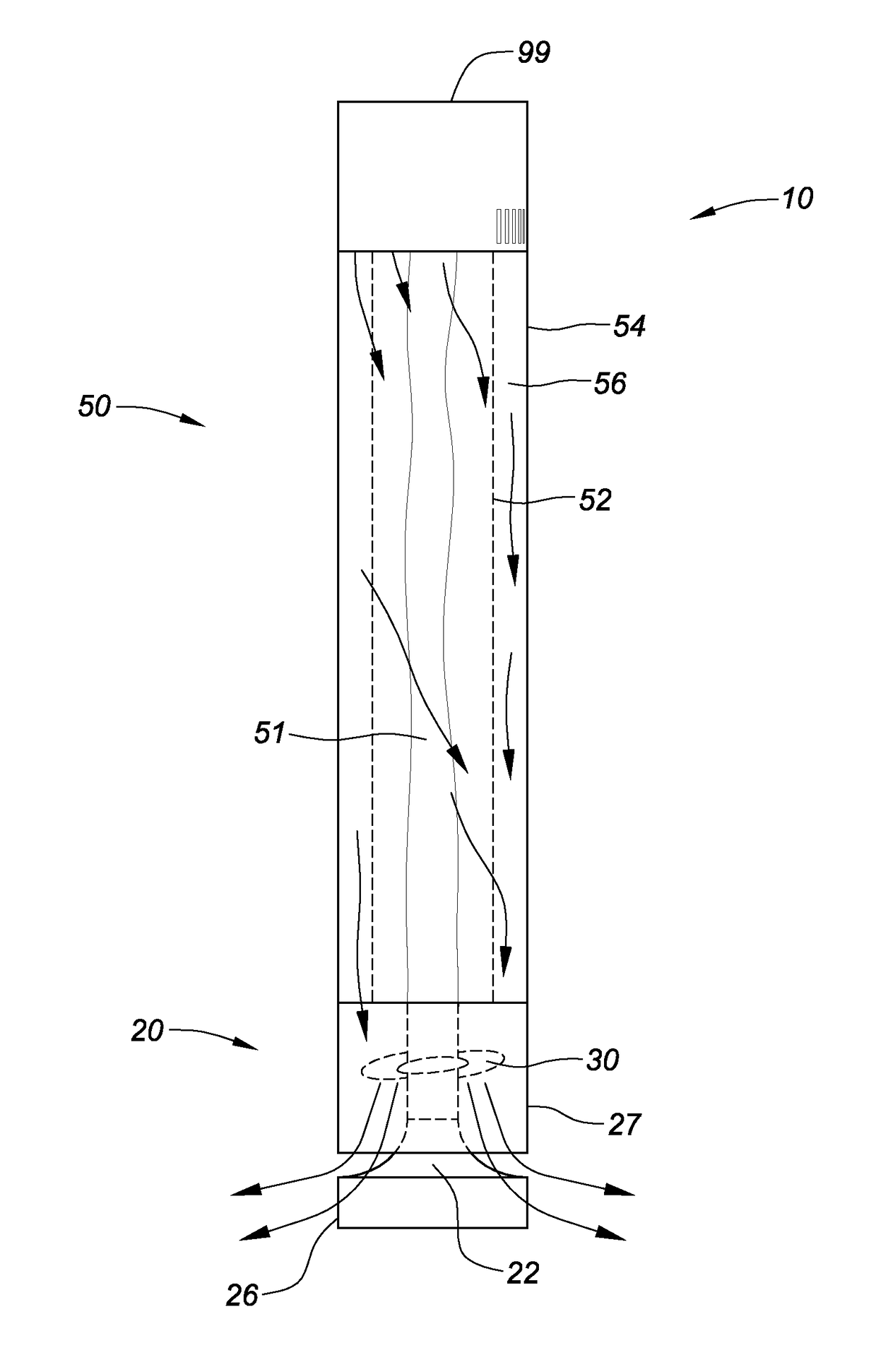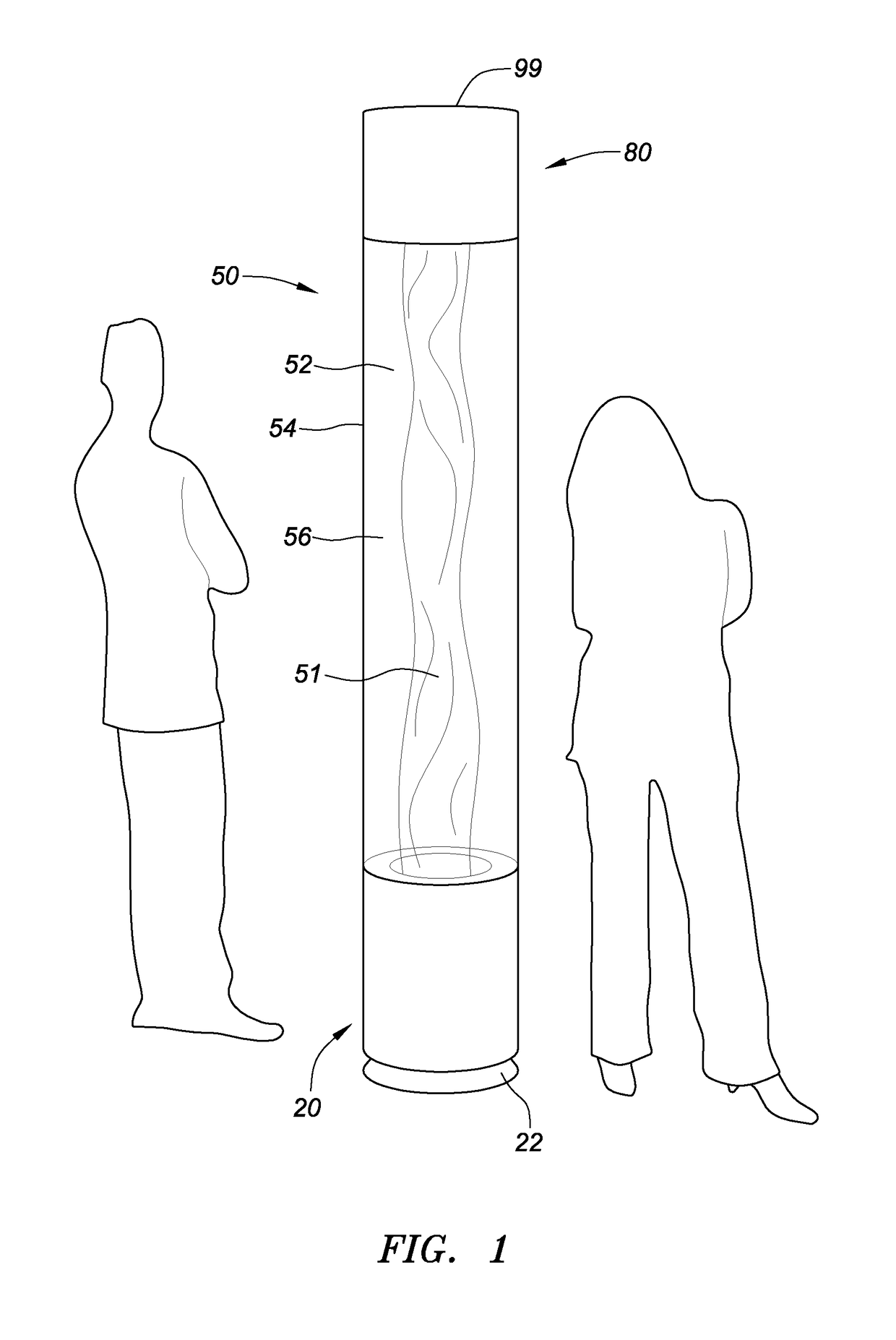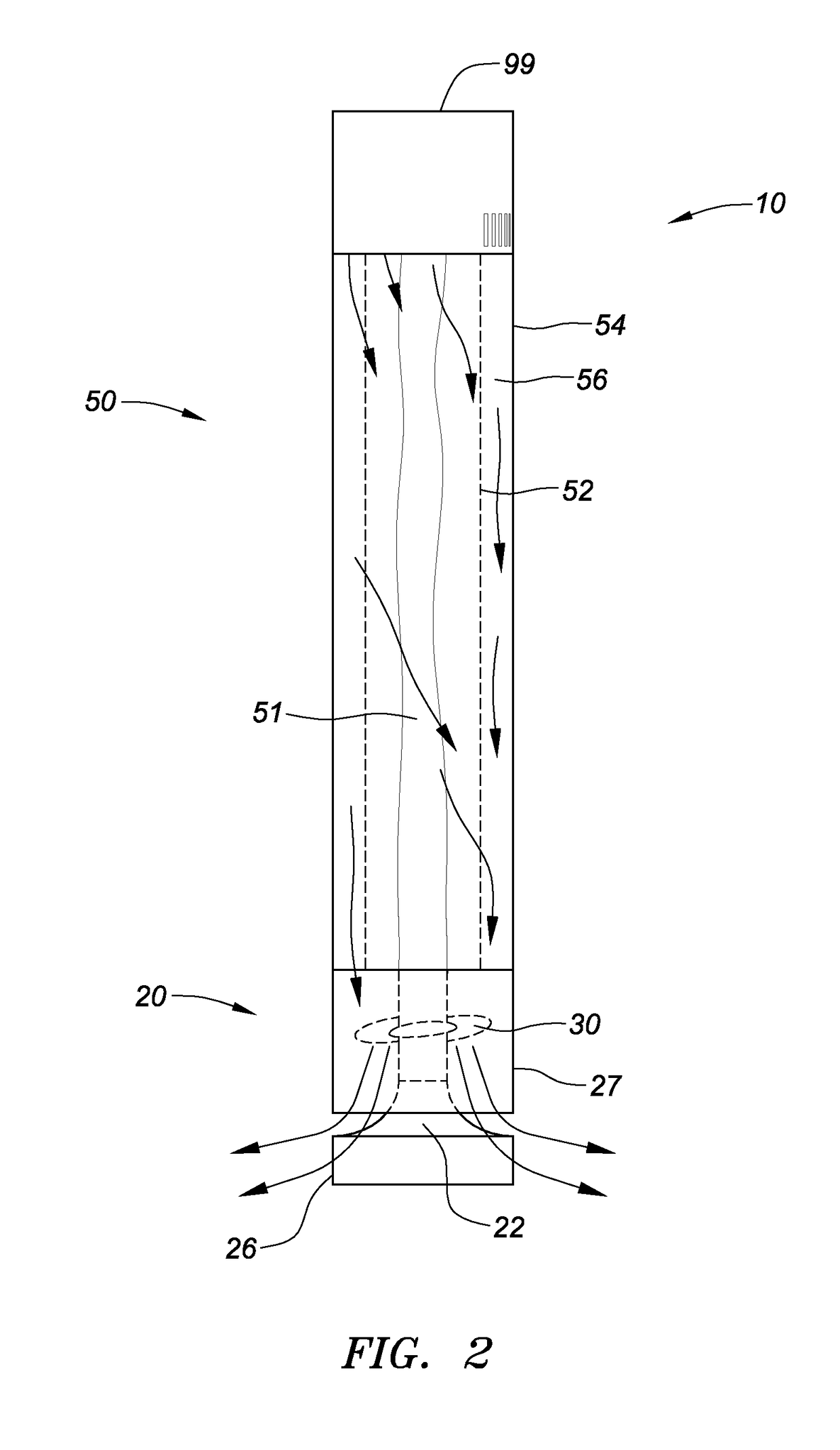Heater with flame display
a technology of flame display and heater, which is applied in the field of heaters, can solve the problems of not visually altering, displaying, and displaying the fire or flame, and the flame in these devices typically does not provide significant heat to the surrounding area, and the flame in these devices does not form a dramatic visual flame
- Summary
- Abstract
- Description
- Claims
- Application Information
AI Technical Summary
Benefits of technology
Problems solved by technology
Method used
Image
Examples
Embodiment Construction
[0102]Preferred embodiments of heater 10 of the current invention and related items are now described. In general, heater 10 may efficiently provide heat to warm a surrounding area and also provide a visual feature of a flame, such as a flame or fire vortex or expression. In this manner, heater 10 may uniquely serve both the utilitarian function of providing heat, as well as the aesthetic function of providing a dynamic visual display that enhances its location. As discussed in more detail below, the overall design of heater 10 itself may also be aesthetically unique and significant.
[0103]It is preferred that heater 10 provides a significant amount of heat to warm various types of surrounding areas such as rooms, apartments, other housing or business locations, outdoor locations and other areas. It is also preferred that the heat provided by heater 10 may be varied in intensity and the direction(s) at which heat is provided to suit different areas to be heated. Similarly, the flame ...
PUM
 Login to View More
Login to View More Abstract
Description
Claims
Application Information
 Login to View More
Login to View More - R&D
- Intellectual Property
- Life Sciences
- Materials
- Tech Scout
- Unparalleled Data Quality
- Higher Quality Content
- 60% Fewer Hallucinations
Browse by: Latest US Patents, China's latest patents, Technical Efficacy Thesaurus, Application Domain, Technology Topic, Popular Technical Reports.
© 2025 PatSnap. All rights reserved.Legal|Privacy policy|Modern Slavery Act Transparency Statement|Sitemap|About US| Contact US: help@patsnap.com



